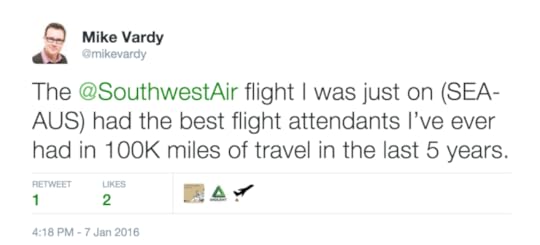Mike Vardy's Blog, page 73
April 25, 2016
The Productivityist Podcast: Productivity & Play with Dr. Kirsten Milliken
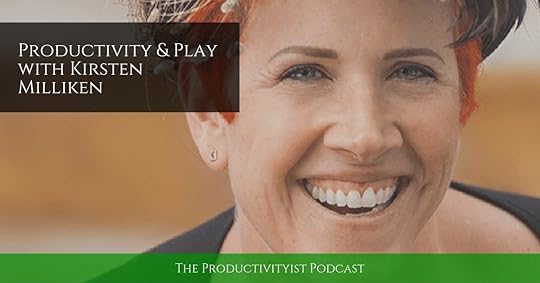
On this episode of the podcast, I speak with clinical psychologist and certified ADHD Coach, Dr. Kirsten Milliken. She’s the author of PlayDHD, a book that not only gives adults with ADHD permission to play – it encourages it!
We talk about a wide variety of topics, including how she tackles her tasks, what role avatars and colour play into her workflow, and why tapping into (and leveraging) your personality type can help you personalize your workflow and help you reach your full potential.
Relevant Links
plAyDHD
Playdhd: Permission to Play…..a Prescription for Adults With ADHD by Kirsten Milliken | Amazon
Time Timer
How To Write a Book When You Have ADHD | TotallyADD.com
4–4 Play! The Secret Ingredient to ADHD Motivation | NAPO 2016
Kirsten Milliken (@ADHDexecutive) | Twitter
If you enjoy The Productivityist Podcast I’d appreciate a rating and review in iTunes or your podcasting platform of choice. It helps people find the show easier and will help me make improvements on the show by seeing what you have to say.
Want to help the show even more? Then become a patron The Productivityist Podcast through our Patreon campaign! Check out The Productivityist Podcast’s Patreon page and take a look at all of the perks – available only to Patreon supporters!
The post The Productivityist Podcast: Productivity & Play with Dr. Kirsten Milliken appeared first on Productivityist.
April 21, 2016
5 Techniques To Beat Work Overload
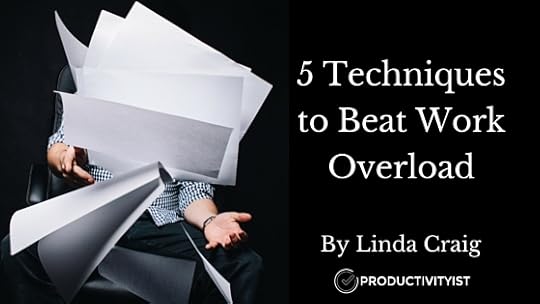
Today’s guest post is by Linda Craig. Linda is a senior content specialist and writing expert at Assignment Masters. She also enjoys talking about productivity and optimizing all areas of business.
You spend the entire day working hard at the office, sifting through the pile of documents on your desk. You know you still have more work to do, but the mere thought of doing all of this work is overwhelming. For many, the approach toward work is very peculiar: the more work you have, the less you want to start doing it.
As you know, your employer expects you to be very productive, so it is important to manage your time more effectively. In many cases, this means doing more work in less time.
If you look for solutions on how to handle work overload, you’ll find plenty of articles that teach you how to deal with stress. Yes, these stress-management techniques can be effective when facing the chaos at the office. But what is the root cause of that stress? Many times, it is work overload.
Let’s go through five techniques to help you move forward.
1. Forget Your To-Do List.
You’re used to writing down a list of tasks every single day, right? Is your to-do list relevant to your priorities or is it really just slowing you down? If it isn’t helping you, then forget about it. You’re overwhelmed. Consider just taking a walk and spend some time thinking. Then ask yourself, “What HAS to happen today?” That’s the one thing you must get to. Once you finish that task, take another short break. Then figure out what you have to do next, and do that.
If you would like to try another approach, just plan your day a bit differently. First, write out that to-do list you’re used to. Take a nice, long look at it. Then figure out which of those tasks you have to do ASAP. Once you’ve done that, consider this quote from Mark Twain.
“Eat a live frog first thing in the morning and nothing worse will happen to you the rest of the day.”
Apply the above quote to your to-do list. If there are several priorities on your list that need to happen, start with least enjoyable tasks first. Go ahead. Eat that frog. For example, let’s say you have to evaluate a few employees, write a business report, and craft a presentation. The evaluations are extremely urgent, but you don’t like criticizing your colleagues at all. The business report is also urgent, and you don’t have a problem doing it. Lastly, you really want to move on to writing the presentation, but you still have one month before the deadline.
One way to handle this would be to do the evaluations in the morning. By doing this, you can get the hardest part out of the way. Then you have the rest of the day to do the report. You can leave the presentation for tomorrow. This approach requires an honest self-assessment of your work that will allow you to move forward.
2. Organize and Plan
It’s important to create an action plan that helps you handle the situation. Arrange your calendar in a way that makes sense to you. Don’t forget to keep it simple. You have the option of using a paper planner to keep track of your tasks or use Google Calendar (which is super awesome).
Not sure where to start? First, think about the thing(s) you KNOW have to happen. You may have a deadline for a business report, presentation to give for an important project, or any other important task. Fill in the date in your calendar. Then, think about recurring tasks you can’t skip. Fill those in, too. You surely have some free time in your calendar. Fill it in with progressive steps that lead you to the completion of that really important task.
3. Manage Your Emotions
In some cases, your emotions can actually make things worse. You keep imagining the worst outcome: “What if I fail?” or “What if I disappoint my boss?” These negative thoughts have the potential to make a stressful situation worse. Thinking about people’s expectations won’t help you get the job done. Instead of dwelling in your doubts or uncertainties, talk to a supportive friend who recognizes your best qualities. A quick chat can help you boost your confidence and your self-esteem. Read a book or listen to music to boost your attitude. Do something for your mental health and find a way to keep those negative thoughts at bay. Take some yoga classes. Meditation (online options are available such as Headspace) can increase your energy levels and even make you more enthusiastic.
4. Find What Can Be Eliminated
Work overload happens when you have more tasks than you can complete. In some cases, it is necessary to eliminate some tasks that don’t help you accomplish the organization’s goals. For example, let’s say you spend six hours a week attending meetings. Talk to your supervisor and explain how the meetings are preventing you from covering other important responsibilities. Ask your boss if the number of meetings can be reduced. Ask if you can attend every other meeting or even make changes streamline meetings to make meetings more effective.
5. Rethink How You Do Your Work
When you intentionally focus on the one specific task at hand, you will see that you often do your highest quality work. Break down your work into simple steps. Direct all your energy towards its completion, and make your best efforts to do a good job. Batching your work can really help as well. When you do several similar tasks together, you’ll notice you’re doing the tasks more effectively because your brain is already in a groove, and you’re not jumping around from one thing to another.
If there is no way for you to deal with all that work alone, take some time to think about effective delegation. For example, if you don’t have time to deal with the company’s social media profiles, you can delegate that task to a colleague, or even outsource it to a social media manager if your budget allows. You can also hire a professional writing service when you can’t write scheduled blog posts, reports, articles, or any other document you have to complete. Virtual assistants are often a very smart investment.
Handling work overload will take some time and perspective. One key to success is to believe in yourself. You’ve already completed “impossible” tasks before, right? Your attitude drives all that you do. Think positive and apply one of the five techniques above.
The post 5 Techniques To Beat Work Overload appeared first on Productivityist.
April 18, 2016
The Productivityist Podcast: Focusing on Memory with Brad Zupp
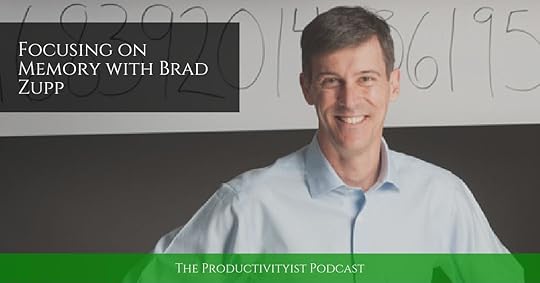
In this episode of The Productivityist Podcast, I speak with Brad Zupp. Brad is an entertaining motivational speaker and memory improvement expert from New York. Brad shows people how to supercharge their memories to improve many aspects of their lives (including productivity) and to have a better memory at any age.
And that’s exactly why I wanted to talk to him. I trust my memory…to a point. And for good reason. I believe that your mind was meant to be a factory and not a warehouse so I was interested to hear Brad’s take on that. I wanted to dive into how we can reconcile what we should try to memorize versus what we shouldn’t, what you can do to keep your memory from fading, how a calendar and other tools can help enhance your memory, and loads more.
Relevant Links
Brad Zupp
Smarter Faster Better by Charles Duhigg | Amazon
How to Theme Your Day for Maximum Productivity | 1 Simple Thing Podcast
Most Productive People: David Robinson | Fast Company
Developing a “Superhuman” Memory | Brad Zupp
The Night Owl Action Plan by Mike Vardy
Memory Can Be Improved At Any Age | Brad Zupp
Stumbling on Happiness by Daniel Gilbert | Amazon
The Year of Fear with Kendra Wright | The Productivityist Podcast
Unlock Your Amazing Memory: The Fun Guide That Shows Grades 5 to 8 How to Remember Better and Make School Easier by Brad Zupp | Amazon
Brad Zupp (@BradZupp) | Twitter
Get Your FREE Report from Brad
If you enjoy The Productivityist Podcast I’d appreciate a rating and review in iTunes or your podcasting platform of choice. It helps people find the show easier and will help me make improvements on the show by seeing what you have to say.
Want to help the show even more? Then become a patron The Productivityist Podcast through our Patreon campaign! Check out The Productivityist Podcast’s Patreon page and take a look at all of the perks – available only to Patreon supporters!
The post The Productivityist Podcast: Focusing on Memory with Brad Zupp appeared first on Productivityist.
April 14, 2016
The Relationship Between Confidence and Productivity

This guest post is by Megan Hicks. Megan is currently working as a writer at Write This Essay. She enjoys reading, traveling and loves finding new ways to stay productive.
It’s okay, you can admit it. You know you need a confidence boost. There’s no shame in it. We all do. It’s when you admit you would like to grow in this area that you place yourself a step ahead of the majority. Your belief in your ability to do your work well has a direct effect on the work you produce. If you would like to be more productive, having a healthy level of confidence is essential to your success, no matter what your profession.
Through working with other writers on a daily basis I’ve seen the effects of confidence on productivity first-hand.
Isn’t Self-Confidence the Same Thing as Motivation?
Let’s examine one presumption you might be making. In many cases, you are making the assumption that confidence is the same as motivation. While confidence can correlate with motivation, which increases your ability to perform, know that confidence is not a motivational force in and of itself.
Confidence can be defined as a judgment about your capabilities for achieving a goal. When you have high confidence, you believe that you are very capable of successfully completing the task at hand. You dive right into the work without your inner critic causing you to hesitate. You trust yourself.
But if you have a low level of confidence, it triggers questions such as: “What if I make a mistake?” or “Can I do this as well as he did?” These questions then make you skeptical of your capabilities. Knowing the differences between your level of confidence and motivation, you can move forward to the ways in which confidence really enhances your experience and leads to more productive behaviors.
What If Overconfidence Is Actually A Good Thing?
An assumption is a mental program you can afford to let go of. It is based on unconscious beliefs that you hold, set in place by personal associations that have no base in reality. An assumption that many people have is that overconfidence is something you should avoid. You do not want to be known for being too “cocky” or “brazen.” Instead, you likely humble yourself to the point of cowardice. One sign of this is when you have a habit of apologizing when you’ve done nothing wrong or constantly questioning your abilities.
Finding a healthy balance between humility and overconfidence is key.
In order to find a healthy balance between having too much self-conviction and distrust in your abilities, it is more important to understand the pros of a set of beliefs that lean in the direction of the first. According to this study by UC Berkley, here are the ways in which overconfidence plays positive roles in the lives of those that exhibit it:
Overconfidence leads to higher social status in short-term and longer-term groups.
Overconfidence makes an individual appear competent to others.
People may believe they are better than others because it helps them achieve a higher social status.
While social status should not be a primary motivator in your work—you’re looking instead at increasing productivity here—this information gives us some groundwork which reminds you that you can give yourself permission to trust your inner voice that tells you that you are simply amazing. Yes, it is alright.
The Role of Self-Confidence in Personal Productivity
Now that you have an idea that can help you boost your confidence levels, here are a few more facts to consider. Research shows that high confidence, as an isolated set of beliefs, has a direct correlation on personal performance. It is also strongly suggested that individuals judge themselves with more scrutiny than others do. So, your responsibility to yourself and your organization is to take accountability for your own confidence.
If you’re lacking in confidence, here are some ideas to help you let go of negative assumptions about yourself and get back to where you need to be:
Have a mantra. I remember finding my stepmother’s self-talk cassette when I was in high school. I popped it into my boom box and immediately burst-into a fit of giggling at the sound of her voice, “I am enough. I am beautiful. I am capable [repeat].” I didn’t understand the concept of mantras at the time. I even thought it was plain silly. But as I’ve watched her change and grow throughout the years, I often think back on that day with humility. There is a reason people practice mantras; they do work. You don’t have to record yourself, write yourself a note and stick it on your computer screen to keep yourself on track.
Take a course. Each time I take a writing course, my confidence is reborn. There is always something to learn; this approach applies to any industry. If you feel like you’re capable at the technical side of your job, there may be another subject you want to study: emotional intelligence, marketing, management, conflict resolution, and the list goes on. Never stop learning. Not only will this help you with confidence, but it will keep your mind fresh as well.
Manage your stress. This is one of the most important and often overlooked tasks you owe to yourself. Stress can induce illness, disrupt sleep, and even kill your confidence. Find out what it is that helps you keep your stressors at bay, and make it happen. Now could be a great time for you to participate in yoga, meditation, or to simply take more time to be present. Do whatever you find works for you. Stress management will help increase your overall confidence and boost your performance at work and in your personal life.
Surround yourself with positive people. The people in your circle are a direct reflection of you and vise versa. If you find yourself in the company of several “Negative Nancys,” it will start to rub off. Positivity breeds positivity, so the more you time spend with people who have a healthy level of confidence, the more confident you will become.
Give yourself permission to be great. Sometimes there are deep-seeded issues that cause us to hold negative judgments about ourselves. Once you identify the psychological barriers holding you back, you can let go of them. When it comes to your work, no one else is going to lose anything when you start showing up as the confident, competent person you know you are. In fact, it is just the opposite. As you start showing up fully, the people around you will become motivated to do better as well.
The Takeaway
When you start to apply some of these techniques above, your level of confidence will grow. When your confidence levels rise, your productivity levels increase. You will be less likely to quit and, in many cases, you will be able to accomplish more than you thought you could. Keep learning as much as possible and then apply what you have learned whenever you can. Confidence comes when you practice good habits and healthy attitudes over time. There will be times that you do not feel confident, and that’s okay. Figure out what encourages you the most and go to that resource when you are struggling.
What is something you do to give yourself a confidence boost? Please share in the comments below.
The post The Relationship Between Confidence and Productivity appeared first on Productivityist.
April 11, 2016
The Productivityist Podcast: Productivity for Dummies with Ciara Conlon
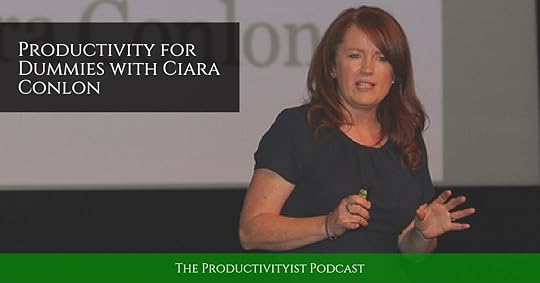
On this episode of The Productivityist Podcast, I speak with fellow productivity strategist Ciara Conlon. Ciara is the author of Chaos to Control: A Practical Guide to Getting Things Done and Productivity for Dummies.
We talk about the things she learned while writing Productivity for Dummies, the methods she returned to while writing the book (and kept using even after the book was completed), and more.
Relevant Links
CiaraConlon.com
Productivity For Dummies by Ciara Conlon | Amazon
EISENHOWER.me
The Pomodoro Technique®
Brain.fm
focus@will
Chaos to Control: A Practical Guide to Getting Things Done by Ciara Conlon | Amazon
Ciara Conlon (@CiaraConlon) | Twitter
If you enjoy The Productivityist Podcast I’d appreciate a rating and review in iTunes or your podcasting platform of choice. It helps people find the show easier and will help me make improvements on the show by seeing what you have to say.
Want to help the show even more? Then become a patron The Productivityist Podcast through our Patreon campaign! Check out The Productivityist Podcast’s Patreon page and take a look at all of the perks – available only to Patreon supporters!
The post The Productivityist Podcast: Productivity for Dummies with Ciara Conlon appeared first on Productivityist.
April 7, 2016
How To Spend More Time On Focused Work
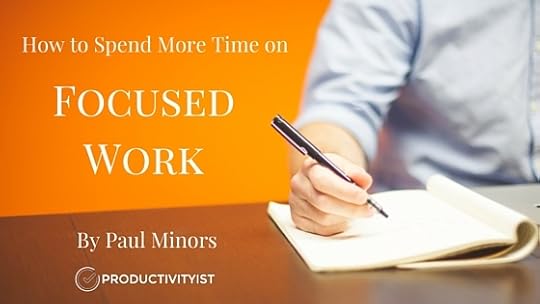
This guest post is by Paul Minors. Paul decided to write this post after hearing from so many people how hard it is to find the time to get any focused work done. You can listen to Paul discussing these ideas on his podcast. You can also sign up to Paul’s free email course, the 7-Day Productivity Plan and learn how to supercharge your productivity.
I’m sure you know the feeling where you have a big project or a task that’s going to require a decent amount of your energy and attention. You feel like the only way to do a good job is to really “get stuck in it.” But there are an endless number of things destined to distract you and ruin this precious time.
Creating the right conditions to do this kind of focused work is really hard. In fact, it’s one of the most common problems when it comes to personal productivity.
In Cal Newport’s book, Deep Work, the author states that the average worker spends roughly an hour a day doing this kind of focused work. What’s that, five hours a week? Less than 13% of your contracted hours? Surely that can’t be right? But once you start to think about your own workday, how many of those eight hours are you really engaged in your work and producing good results without getting distracted? When you factor in all of those toilet breaks, trips to the water cooler, and unnecessary conversations with your coworkers, it’s not a stretch to think this fact could really be true.
Creating the right conditions to support focused work is essential if we want to get more of the important stuff done. And that’s exactly what I’m going to talk about in this post.
You can also listen to my thoughts on the topic in this episode of my podcast: Click here to listen to the podcast.
What Is Focused Work?
Before we get to the nitty gritty, let’s have a closer look at what focused work really is.
You may have come across this article a few months ago by Google employee, Jeremiah Dillon. In the article, Jeremiah tells the story of how he emailed his colleagues requesting they re-consider how they manage their time. The email had the subject line: If you don’t have time to read this… read it twice. Now who wouldn’t click and open that email?
Jeremiah goes on to discuss two different work styles: the “maker” and the “manager.”
“The manager’s day is cut into 30-minute intervals, and they change what they’re are doing every half hour. Sort of like Tetris — shifting blocks around and filling spaces.
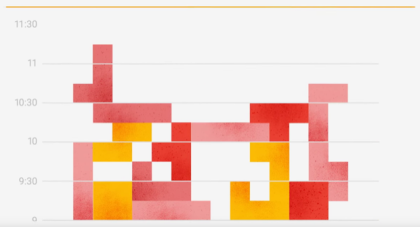
The maker’s day is different. They need to make, to create, and to build. But, before that, they need to think. The most effective way for them to use time is in half-day or full-day blocks. Even a single 30-minute meeting in the middle of “Make Time” can be disruptive.”
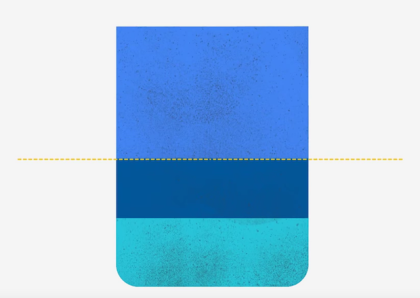
This is a really simple idea and I bet you can put yourself into one of these categories fairly easily.
The article argues that we all need to have enough “make time” as this is where the magic happens. This is the time when we get our real work done.
This email had such an impact that Google decided to make it into video!
Why We Need Focused Time
We all need to set aside a set amount of time in our busy schedules for “focused work” or “make time.” This is where the rubber meets the road; it’s when all planning and organizing stops and actual work can take a front seat. It’s when you actually get to do all the things you’ve up until now simply talked about and planned.
As we’ve already talked about on the Productivityist blog, Cal Newport’s “deep work” can be defined as:
High-Quality Work Produced = (Time Spent) x (Intensity of Focus)
It stands to reason then that if you double your focus intensity, you will in effect need only half the amount of time that task takes while still reaching the same outcome. Or you can choose to spend an equal amount of time on a task and with more focus, produce a higher quality outcome as a result.
I hope you can see how focused work goes hand-in-hand with your ability to focus and therefore, produce a better result.
What Prevents Us From More Focus?
In order to “get into the zone” and improve your focus intensity, you need to address a number of distractions. These distractions can even include your family members. While you love spending time with them, but it’s still important to have some alone time once in a while.
Other people (the kids). Your kids (if you have them) want your time and attention and in many cases are arguably the hardest to control. Hence, why Jeremiah chose to send an email to his colleagues asking them to respect his “make time.”
Social media (your spouse). With so many Tweets, articles, videos and snaps to keep up with, no wonder we get so distracted during the day. Similar to how you and your spouse have a number of “projects” in your life, all these different social networks want the same thing – your attention. If you’re going to get some focused work done, you can’t give too much of your attention to them.
Email (the sneaky cousin). Social media is a lot like having a sneaky cousin. Let me explain: email pretends to be important (and sometimes is), but if we give it too much attention, will abuse our time and disrupt focused work. It’s much better to manage email in intervals throughout the day.
Meetings (the loud uncle). Another sneaky relative, meetings are often a waste of time when not properly planned or managed. Before accepting your next meeting invite, question the purpose of the meeting, the amount of time required and whether you even need to be there.
Small and easy tasks (your mum). Sometimes, when it all gets a big much, it’s nice to return home to some of Mum’s home cooking. Ticking off small and easy tasks is a nice way of creating a false sense of productivity. Yes, these things need to get done, but because they’re easy, they’re often done before focused work as a way of postponing the more difficult work.
How To Spend More Time on Focused Work
Now for the bit you’ve been waiting for. How do you actually create the right conditions to do more focused work?
1. Schedule your “make time”
This is a very quick and easy way of committing to a certain amount of focused work every week. As Jeremiah requested when emailing his colleagues:
“I have Make Time on my calendar. Please don’t schedule over it, and I promise to do my best not to schedule over yours.”
Let’s say you want to get at least 10 hours of focused work done every week (not a tall order). That’s 2 hours a day. You can block this on your calendar and for even more effect, I would suggest setting it to repeat so your focused work starts at the same time every day. Say 9 – 11 am. That way, your colleagues will come to learn that this is your time when you are not to be disturbed.

If you use Google Calendar with your colleagues, you can view your one another’s appointments so you know when they’re free. If you don’t want them knowing what’s on your calendar, you can set the event details to private as well. The event will still appear, but no title or details will be shown.
2. Eliminate the distractions
Before a doctor can treat a problem, they need to diagnose the illness.
Whenever you get distracted, make a list of the things that are grabbing your attention. Every time something distracts you again, add a tally to that item. This allows you to work out what’s distracting you and which items on the list are more distracting than others.
If you’re still not sure, use an app like RescueTime to track your website and app usage to get a nice clear picture of where you digital time is being spent.
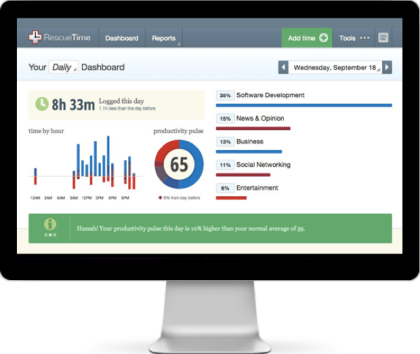
Once you understand the problem, you can take steps to eliminate the problem.
If social media is the big culprit, look at using a website blocker like Stay Focused (Google Chrome) or Self Control (Mac app).
If the problem is other people, try talking to them. Or copy Jeremiah’s email and send it to them.
The key here is to identify the causes of your distraction and then take steps to remove it from the equation. With fewer distractions, you can focus more and decrease the overall time you need to complete a task.
3. Change up your environment
Productivity guru, Julia Roy, recently wrote about having “work only zones.” Well, what about “focus only” zones? Try and find somewhere you can associate with focused work and go there on a regular basis.
If you work in an office, is there somewhere you can go, perhaps a small meeting room, for a short period of time to get your focused work done? Or maybe you have a certain coffee shop or library that helps you to get in the zone.
Changing environments like this helps to remove a lot of the distractions that could otherwise highjack your attention. It’s also a great visual cue to other people that you’re not to be disturbed. If you’ve moved from your normal place of work to a separate space, clearly there’s a reason and most people will know not to disturb you.
I also like listening to instrumental music, movie soundtracks and anything without lyrics as a way of blocking out distracting noise and other people’s conversations.
Here are some of my personal favourites:
Dive by Tycho
Haunt Me by Tim Hecker
The Secret Life of Walter Mitty (original motion picture soundtrack)
The Blue Hour by Frederico Albanese
4. Align your “focused work” with “prime time”
We all have different times that we work really well at. Finding your most productive time (we call this “prime time”) and aligning this with your focused work is a recipe for success.
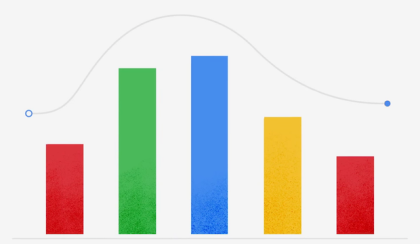
To find your “prime time”, think about
When do you feel best? – If you’re not in the right state of mind, it’s very hard to get focused work done.
When can you find some uninterrupted silence? – Have you thought about getting to work a little earlier so you can get some focused work done before everyone else arrives?
When are you less likely to make excuses? – Friday afternoon is never a good time for focused work (valid excuse). But what about Wednesday at 9 A.M.? Mid-week when motivation and energy levels peak can be a great time to work (no excuses).
5. Get the “managers” on board
Not just your actual “managers” but also the other people who act like managers by breaking up their day into small chunks and constantly change their plan.
If these people are distracting you, talk to them. Explain that you’d like to get more focused work done. They have no excuse to get angry with you about this and who knows, maybe you can even teach them a thing or two about getting more focused work done. Explain that when they ask: “Do you have 5 minutes?” that it often takes a lot longer than 5-minutes to refocus after being distracted (and 5-minute conversations often end up more like 10 or 15 minutes).
Getting these people on board is key if you want to make sure the managers in your workplace aren’t dragging you into unnecessary meetings and stealing small blocks of your time throughout the day.
Key Takeaways
Everyone needs to spend time on “focused work” (or “make time”) in order to get the most important and high-impact tasks done.
Eliminating the distractions that interrupt your focused work starts with identifying the most distracting people, apps, websites and habits that highjack your attention.
Schedule time to do your focused work and make sure this aligns with when you feel the most productive.
If possible, find a new environment where you can get stuck into your focused work without being distracted.
Get your friends, colleagues, spouse (whoever you need) on board with the plan and make sure they know when you want to be left alone.
The post How To Spend More Time On Focused Work appeared first on Productivityist.
April 5, 2016
Why it’s Important to Find Joy in Your Work
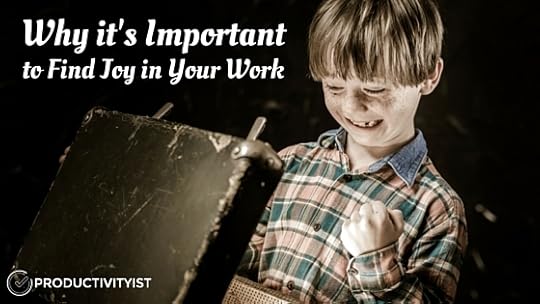
This piece originally appeared in The Productivityist Weekly newsletter. If you’d like to receive first-run and exclusive content delivered to your email inbox every week (and receive additional bonus offers and a free copy of my manifesto The Way of The Productivityist, sign up here.
As I wrote this I was flying at 30,000 feet en route to Austin, Texas for the Think Better, Live Better event in January of 2016. I had a travel mug of orange tea next to my iPad Mini and a Bailey’s on the rocks next to that.
I didn’t intend on ordering a Bailey’s. It was given to me by the Southwest flight attendants.
It’s possible that the reason I got it was because of the tweet I sent before takeoff proclaiming that Alex, the flight attendant on the loudspeaker, provided the most entertaining pre-flight experience I’d ever had in my many miles of air travel. I’m not sure, but it was a nice gesture and they almost insisted that I take the drink. Alex may have even said “We’re getting you a Bailey’s on the rocks, okay?”
It was clear to me that Alex and his “family” (as he called them during the preflight emergency announcement) found joy in their work. Once the passengers in the cabin saw this joy first hand, it changed their attitude. You could hear laughter throughout the aircraft. It made that flight the most enjoyable I’ve ever had. (And I’ve flown in business class before, so that’s saying something!)
If you’re struggling to find joy in your work, it’s time to figure out why. Is it a matter of perspective? Are you overwhelmed? Are you focusing on the right things? Are you in the right line of work?
There’s this wonderful quote that Gretchen Rubin shares in this video she created:
“The years are short but the days are long.”
The years are too short for you to not be doing what you need and want to do in life. Every day gives you a new chance to find joy in the work you’re doing or even pursue a new career path. The changes you make to figure that out don’t have to be radical. Creating better boundaries for your days is a great place to start. Even keeping a journal that dissects your feelings and thoughts over the course of day can provide elements of clarity.
Standing still won’t get you moving forward. Moving around may get you moving, but you could wind up moving about madly in the wrong direction. Look for what brings you joy and that will help show you the way forward.
I love it when I discover people who find joy in their work like Alex. It shows me that when you find joy in your work, it doesn’t matter what your work is because you will also have found the best way to do it at such an exceptional level.
Someone who has definitely found the joy in their work is Chris Guillebeau. Today marks the release date of his new book, Born For This. I had a chance to read an advance copy of the book and it’s a fantastic read. You can pick up the book here.
If you’re interested in going to one of the dates on Chris’s Born For This World Tour, then go here to see if he’ll be visiting your part of the world. (He’s coming to my part of the world because we’re bringing him to Victoria!)
The post Why it’s Important to Find Joy in Your Work appeared first on Productivityist.
April 4, 2016
The Productivityist Podcast: Making Better Meetings with John Poelstra
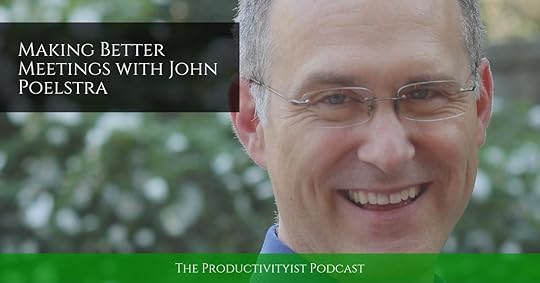
On this episode of The Productivityist Podcast, I speak with podcast producer and meeting facilitation expert John Poelstra about how we can go about making better meetings.
We dive into the “MAP” you need to make your meetings better, how to improve your meeting facilitation skills, how to deal with latecomers and attendees who take over meetings, and much more.
Relevant Links
Webinar Ninja
The True Cost of Meetings | ReadyTalk
The Upsell Podcast
Listen to #QOTD What would you do to make meetings better? | Anchor.fm
Kick The Chair: How Standing Cut Our Meeting Times By 25% | Forbes
Get The 2PR Meeting Attendee Tool
The Productivityist Podcast | Patreon
Meeting Makeover | A Productivityist Podcast Exclusive Offer
(Note: The above link takes you to a direct purchase page so you can get the bonus offer described in the podcast. Want to know more about Meeting Makeover before buying? Click here.)
John Poelstra’s Website
John Poelstra (@johnpoelstra) | Twitter
If you enjoy The Productivityist Podcast I’d appreciate a rating and review in iTunes or your podcasting platform of choice. It helps people find the show easier and will help me make improvements on the show by seeing what you have to say.
Want to help the show even more? Then become a patron The Productivityist Podcast through our Patreon campaign! Check out The Productivityist Podcast’s Patreon page and take a look at all of the perks – including a select number of monthly Productivityist Coaching sessions with yours truly – available only to Patreon supporters!
The post The Productivityist Podcast: Making Better Meetings with John Poelstra appeared first on Productivityist.
March 31, 2016
How I Use Evernote for Meetings
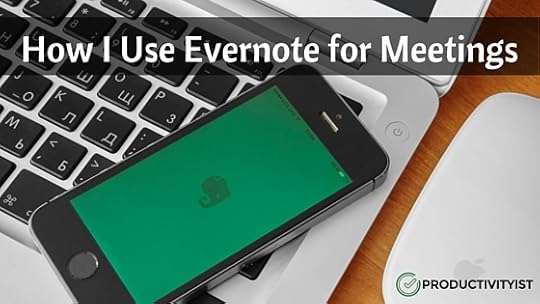
Evernote is a big part of my workflow. I use it to hold my ideas until I’m ready to do something tangible with them. I use it in conjunction with Todoist all the time, and I even used it to build my CreativeLive course.
And I also use Evernote for meetings.
Now I know there are plenty of services out there that you can use for meeting organization. But there comes a time where you need to decide whether you want to use a service for only one thing or whether you can use something you’re already using for many things. Sure, a meeting organization tool or service is going to be useful right out of the gate without any sort of manipulation, but you still need to learn how to use it effectively. But if you’re already using Evernote (or are a user but don’t use it enough), why not modify it to serve your meeting needs?
It doesn’t have to be an all or nothing solution, either. You can use a meeting tool alongside Evernote if you want (or need) to. For example, the meeting service Do has integration with Evernote that allows meetings to be exported for easy access. Meeting minutes are exported to a notebook dedicated exclusively to Do content. (Do is free to use in its most basic iteration and you can sign up for it here.)
But you really don’t need to use a service like Do (or even LessMeeting) to use Evernote as a meeting information hub. I decided a while ago that for most of my meetings, I don’t need such a tool. In fact, my wife and I dive into Evernote every time we have the one meeting I strive to have weekly: The FFFing Meeting.
Evernote Meetings Case Study #1: The FFFing Meeting
The FFFing Meeting is one where my wife and I discuss Finance, Food, and Family. We schedule these meetings so that when we have time to spend together we aren’t sprinkling our casual conversations with important discussions revolving around these three important areas of household management.
The FFFing Meeting is also a play on words because meetings can often be a source of complaints rather than a time of constructive collaboration. But let’s just stick with the idea that the three fs stand for those areas I mentioned above, okay? 
March 29, 2016
3 Ways to Power Through Your Email Inbox
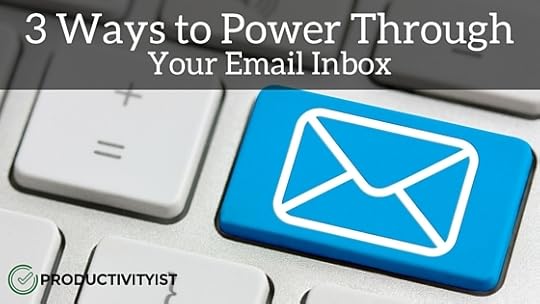
Email is a terrible place to spend the majority of your time.
Don’t get me wrong – email is a fantastic tool for communication. The problem is when we keep connected to it to the point where we don’t disconnect enough to do the other aspects of our work. I know that email is part of what we need to do every day, but it isn’t the only thing we need to do.
And it certainly shouldn’t pull us from the important work we need to focus on.
So if you’re ready to get out of email and into your deeper work in a simple and efficient way, then I’ve put together 3 options for you.
Let’s get you out of that inbox, shall we?
Option 1: Sort Email Differently
By default we review our email by the date it was sent to us. That would be fine if the natural way to respond was the same way as how we deal with food in our fridge.
When you’re running low on milk and you need to buy new milk, you don’t start drinking the new milk before the older milk is gone. Why? Because the older milk would spoil. The same goes for any food that will expire if not consumed. You eat the oldest food first, right?
With email, apps give us the view of our newest emails first. That means the older emails work their way down the list and lose their ability to grab our attention. The new email messages are bold and stand out at the top of the pile while the older emails lose their sheen and fall further into obscurity.
I’m a big believer in sorting emails in the first in, first out manner. But that doesn’t necessarily work for everyone – and it doesn’t mean you need to sort messages by date either.
The easiest way to sort your email differently is to sort by date, flipping the switch and showing your oldest messages first. This will terrify those who have been letting emails fester in their inboxes for a long time, but it’s worth doing because you’ll get to see what should have your attention and what can be eliminated altogether. While Gmail doesn’t appear to let you sort by newest and oldest email messages, there is a way to make it work. Check out the GIF below to see what I mean.

If you’re using Outlook or Mail.app for the Mac you can make this change as well. The email app I use on iOS (Dispatch) also allows for oldest messages to appear first. (I’m not sure about other iOS or Android email clients on this feature, so if you’ve got one that also does this then please share it in the comments.)
One thing Gmail doesn’t do (at least out of the box) is allow you to sort emails by sender. This is something I’ve recommended to people who want to make sure they don’t miss anything from someone and are tired of wading through their email inbox to find messages from individuals who have more importance than others.
You can do this in various mail applicaitons (again both Outlook and Mail.app do this) but the only way to do this in Gmail effectively is to use a filter. Since I don’t need to sort by sender, I haven’t set up such a filter (or set of filters), but if you’re adept at Gmail you can make it happen easily. The website GTricks offers several sorting options here.
Option 2: Set Better Limits With Your Email Workflow
I have a few ways that I set limits with email, and I think that anyone who is struggling with their email inbox (or inboxes) grabbing more time than they’d like would be wise to create constraints that are reasonable.
One constraint is the constraint of amount of email you’ll process every time you view your inbox. Set an amount of messages you’ll deal with each time – no matter what type or length the message is – you view your email. If you’re looking for a reasonable number to start with, consider that I’ve found the average time it takes for a Productivityist Coaching client to deal with an email to be 45 seconds. In one 15 minute span with one client, they were able to deal with 20 email messages. Some of those messages were archived directly, others were sent to their task app of choice, and others were given a response. If you do the math, you could deal with 80 emails in one hour of uninterrupted time.
And that’s the other constraint you could use: time.
Instead of leaving your email app open all day long (or having notifications ping you every time an email lands in your inbox), you could set aside chunks of time throughout your day to check email. I suggest 25 minute time blocks to align with The Pomodoro Technique.
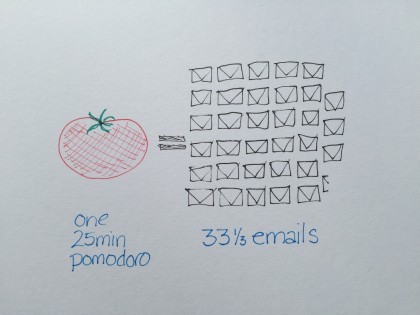
With one 25-minute “pomodoro” you could deal with 33 and one-third email messages. If you did that three times per day, you could knock out 100 emails in just 75 minutes. You’d be able to give thoughtful and focused responses to emails because you’d only be dealing with them at your predetermined time slots and for a predetermined amount of time.
Don’t think you can get away with setting constraints with your email inbox? Give it a try for a week. Set up three time blocks in a day to check email. Set an audible reminder on your mobile phone that you set to three different times in the day. Then work in sprints on your email for 25 minutes at a time. If you’re looking for times to choose, I’ll give you some to consider:
10:00 AM: This keeps you from checking it first thing in the morning and allows you to stick to your agenda to start the day rather than get derailed by the agendas of others.
1:00 PM: Right after you take your lunch break (you know, the time when you leave your desk and work behind to disconnect and get a well-deserved break) is a good time to check in with email.
4:00 PM: This will be your last email review of the day and it allows you to tie up any loose ends from the day. This also helps you prepare your strategy for the next day. (After you’re done with this final email check, you should give your own agenda – your to do list – a check to make sure that you’ve earmarked what got done and what you need and want to do going forward.)
Laura Vanderkam only checks email twice per day. I do so three times per day. Considering this study suggests I’ve got that number about right – as opposed to the 15(!) times the average person checks email – I’d say you should give it a try too.
Option 3: Use My 3Mail Workflow
I process email three times a day and I have a pretty deliberate framework for doing so. I mentioned my process on one of my bonus episodes of The Productivityist Podcast (available to Patreon supporters only) and have shared the clip below.
https://productivityist.com/wp-content/uploads/3Mail-Audio-V1.mp3
(Note: I’ll be building a page dedicated to my email workflow soon to accompany the audio above. I’ll be sure to share it with you once I’ve published the page.)
Email can be a real pain point for productivity. There are many ways that you can keep it from causing stress (here’s what guest author David Ly Khim wrote about that). The key is to make sure that email is part of what you do and not the only thing that you do. You need to get out of the inbox and into your work – email isn’t the place where that can happen easily. Give these tactics I’ve suggested a try – either whole or in part – and you’ll spend less time wading through email and more time moving things forward.
The post 3 Ways to Power Through Your Email Inbox appeared first on Productivityist.

